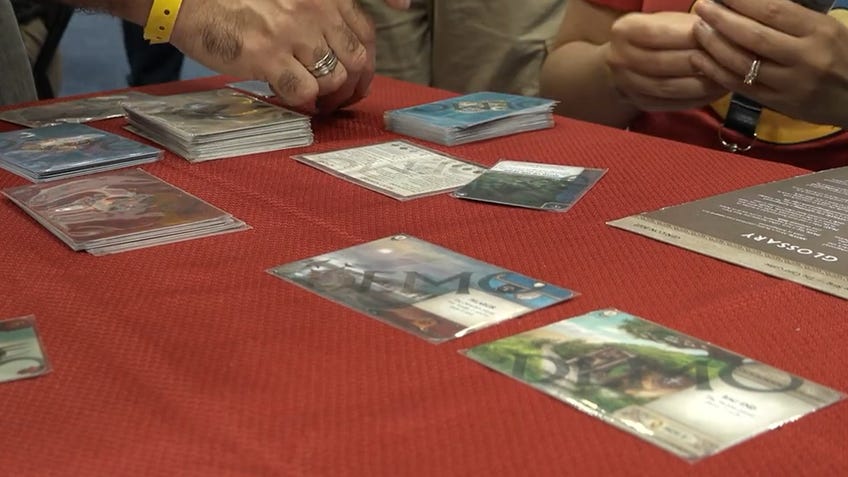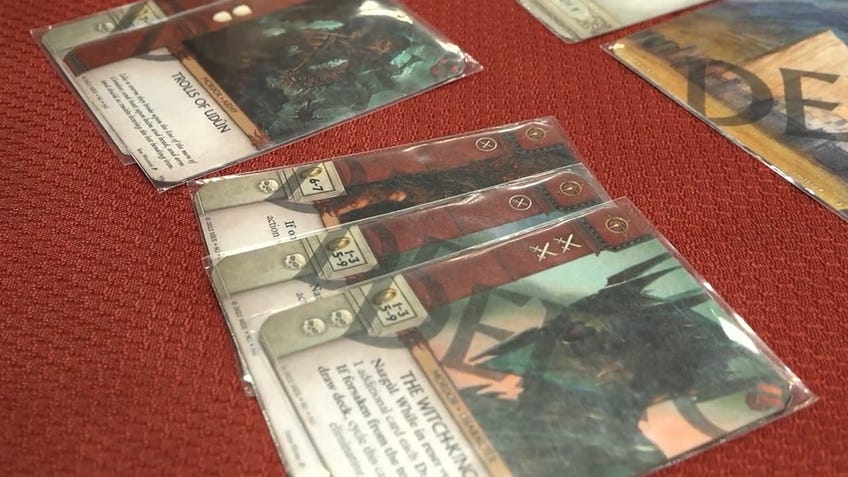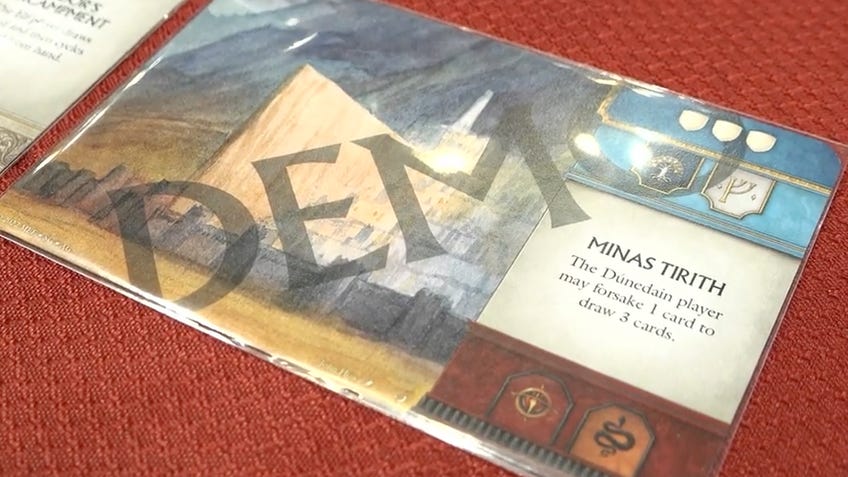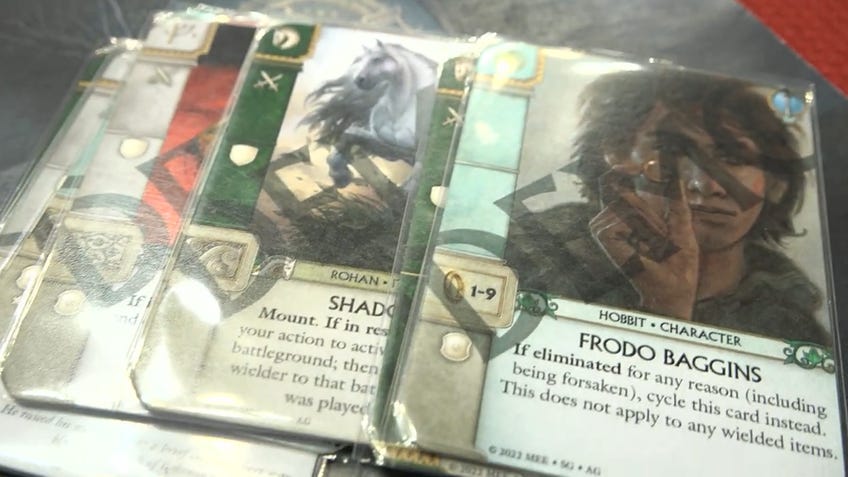War of the Ring: The Card Game is shaping up to be another essential for Lord of the Rings fans
Precious.
War of the Ring is widely considered to be one of - if not the - greatest adaptations of JRR Tolkien’s Lord of the Rings to a tabletop experience. Recreating the entirety of Tolkien’s book trilogy as a Risk-style board game, War of the Ring is soaked through with the dense lore and worldbuilding of the novels, combining a faithful commitment to the story of Frodo and the Fellowship of the Ring with the sprawling battle between good and evil that spans the whole of Middle-earth.
As a result, War of the Ring is also a whopper of a board game, requiring several hours to play - and potentially several more if you count setup and time to teach its hefty rules.
A potential remedy for Lord of the Rings fans without half a day to play is War of the Ring: The Card Game, an upcoming transformation of the board game behemoth to a comparatively lighter and shorter card game, measuring in at under two hours from start to finish. The card game condenses War of the Ring’s weighty trunk of dice, plastic miniatures and table-swallowing board into a few decks of cards, replacing its complex wargaming gameplay with a brand new card-driven ruleset designed by Quartermaster General creator Ian Brody.
Playing a four-player demo at Gen Con 2022 ahead of a planned release later this year, the upcoming card game spin-off from War of the Ring proved itself to be far more than a basic simplification of the richly thematic and strategic board game.
Like its board game cousin, War of the Ring: The Card Game is highly faithful to Tolkien’s original novels. Not just in the luscious artwork and deep lore on the cards, which stretch into corners of Middle-earth sometimes passed over by other games, but in the way that the story of The Lord of the Rings shapes the flow of the gameplay itself.
Like its board game cousin, War of the Ring: The Card Game is highly faithful to Tolkien’s original novels.
War of the Ring: The Card Game centres around two locations played in the middle of the table each round. One is a battleground representing one of the key battles between the Free Peoples of Middle-earth - elves, dwarves and the nations of Rohan and Gondor, as well as the Fellowship of the Ring - and the orc and Uruk-hai forces of Shadow, while the other is a path card that divides the journey of Frodo into nine key chapters, from the Shire to Mount Doom.
Players each use a unique deck representing the opposing factions, with two players taking on the sides of the Free Peoples and Shadow, while three or four divide into teams: Sauron and Saruman on one side, Frodo (plus the Fellowship) and the Free Peoples on the other.

The path cards follow a set pattern, recalling the Fellowship progress track seen in War of the Ring (the board game) as they retell the Ring-bearer’s quest to destroy the One Ring. There are multiple possible locations for each step of the journey, with one randomly drawn for each round, allowing variation between playthroughs.
The battlegrounds, meanwhile, can appear at any point during the game - with multiple battlegrounds able to appear simultaneously under certain conditions. The locations span Middle-earth to symbolise the battles happening outside of the Fellowship’s journey, typically focusing on the clash between armies and their leaders rather than the character-driven encounters represented by path cards.
On battleground cards, the opposing sides fight to wrest control of military strongholds across Middle-earth, while path cards see Frodo and his companions attempting to resist the corruption of the One Ring and Sauron’s influence. In keeping with their appearances in the books, some characters can only be played to certain locations - for example, Eomer and the Riders of Rohan won’t appear until the Fellowship crosses into Rohan during The Two Towers’ timeline. Battleground cards also introduce a leadership mechanic that requires leaders to be joined by an army to unlock some of their icons, neatly encapsulating the influence of powerful figures such as Elrond and Theoden.

While War of the Ring: The Card Game is as richly thematic as its predecessor, it’s a much faster-moving game than the multi-hour epic. Players alternate turns by playing a single card either in front of them - reserving it for use in a future round - or to a path or battleground card, contributing its attack or defence values (whether military strength or corruption/resistance) to the respective faction. Event cards trigger one-off effects, and items can be attached to specific cards - arming Gimli with his axe, or letting a Nazgul mount their Fellbeast.
While War of the Ring: The Card Game is as richly thematic as its predecessor, it’s a much faster-moving game than the multi-hour epic.
Once players have two or fewer cards in their hand, they can pass. Once everyone passes in a row, the round ends, attack and defence totals are calculated for each card and the winning side claims victory points equal to the card’s value, with ties going to the side that starts in control of the location. The game ends once one team pulls 10 victory points ahead of their opponents - granting them an instant win - or the game reaches the end of round nine, resulting in a tally to determine the victors.
Like many of the best card games, it’s a simple set of rules made strategically complex by the possible combinations and effects of the cards themselves. Many cards grant bonus abilities when played to a player’s reserve area, making it not quite as obvious as throwing your most powerful cards into the fray.

Central to the game’s careful cardplay is the need to ‘cycle’ in order to play a card from your hand, discarding another card to your discard pile as the price for your action. Whittling down your hand from both ends - paying for the most useful cards with the least - makes for a tricky bit of decision-making on each turn, making every action engaging and meaningful without burdening the rules with clunky or confusing requirements.
While cycled cards will eventually be shuffled back into a player’s draw deck, cards can also be eliminated in some extremes - removing them permanently from the game. This can come as the result of being defeated in battle by excess location damage or occasionally by choice - choosing whether to ‘forsake’ a card from your hand, reserve or the top of your draw deck - in order to trigger more powerful effects, presenting another chewy bit of tactical risk-reward planning to consider.

After a few minutes taken to get to grips with the rules, the rounds we played at Gen Con moved quickly as each player threw down their lot and fought for the future of Middle-earth. Rounds were fast and fun, the alternating turns of the Free Peoples and Shadow teams resulting in snappy reactions to the other team’s plays and bold attempts to seize control of both battlegrounds and the Ring-bearer.
Crucially, as a Lord of the Rings fan, War of the Ring: The Card Game managed to create a deeply thematic experience without the heavy investment of its brilliant - yet weighty - board game counterpart. The combination of character-driven encounters on each path card with the wider skirmishes between armies on battlegrounds faithfully captures the mixture of personal drama and epic scale that The Lord of the Rings excels in, backed by gameplay that finds the potential for strategy while staying approachable.
Embedded in the faithful commitment to Lord of the Rings that made War of the Ring such a rewarding experience, War of the Ring: The Card Game is a worthy heir to the name.


